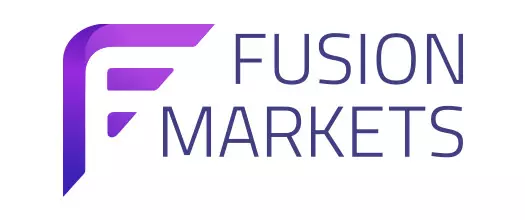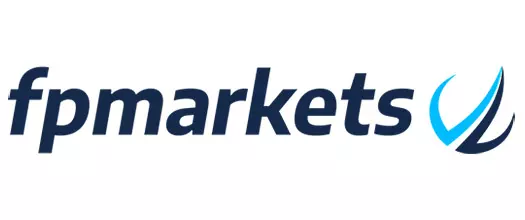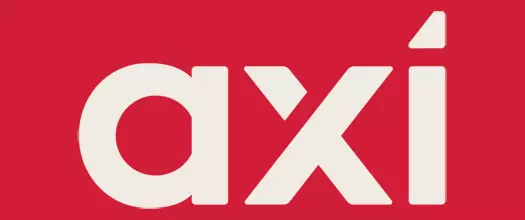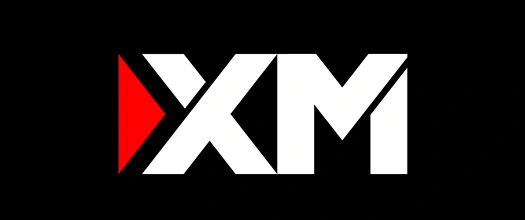Our team of expert traders tested several regulated and trustworthy Solana trading brokers and compiled a toplist with the best among them. Each Solana broker received a quality score based on several factors, including Trustpilot rating, regulation, fees and commissions, available trading platforms, customer service and more.
 Fusion Markets74-89% of retail's CFD accounts lose money
Fusion Markets74-89% of retail's CFD accounts lose money FP Markets73.85% of retail investor accounts lose money
FP Markets73.85% of retail investor accounts lose money Global Prime74-89% of retail CFD accounts lose money
Global Prime74-89% of retail CFD accounts lose money Pepperstone75.5% of retail investor accounts lose money
Pepperstone75.5% of retail investor accounts lose money AxiThe vast majority of retail client accounts lose money
AxiThe vast majority of retail client accounts lose money XM Group72.82% of retail investor accounts lose money
XM Group72.82% of retail investor accounts lose money
Top Ten SOL Trading Brokers
To create our listing of the top 10 SOL Trading Brokers, we have taken into consideration a range of factors including licenses from regulatory bodies, diversity of financial markets, and trading features, among others. Based on these, we are confident traders will enjoy a rewarding experience with any of the below-mentioned Solana Trading Brokers.
- Min DepositNo specific requirementsFees
- No deposit and withdrawal fees;
- No account inactivity fees
CommissionsStart from $2.25 per lot commissionSpread- Minimum spreads of 0.080
- Average spreads of 0.097
Leverage EU2:1Leverage non-EU10:1*CFDs are complex instruments and come with a high risk of losing money rapidly due to leverage. 74-89% of retail investor accounts lose money when trading CFDs with this provider.Fusion Markets is yet another top-rated trading broker that started operating in 2017. Its primary focus is on the Australian trading market and the company holds a license from the Australian Securities and Investments Commission.
Asset classes available to trade in Fusion Markets include Forex pairs, indices, metals, commodities, and a decent selection of cryptocurrencies CFDs, among others. Customers of the brand use the popular MetaTrader 4 platform. A demo account is also in place, enabling prospective customers to test out the trading platform.
The spreads for trading crypto assets are very competitive. The ones for Solana start from 0.080, and the average ones reach 0.097. Some markets have average spreads of 0.0 and commissions of $2.25 per side, making Fusion Markets an attractively priced trading broker.
As far as the minimum deposit requirements of the broker are concerned, customers will be glad to find out there are no such. This fact, along with the competitive pricing policy, matches the main mission of the company – to offer a superior trading platform at a considerably lower cost compared to its competitors.
The trader also offers its clients the opportunity to open accounts in different currencies including USD, EUR, JPY, and GBP, among others. Funding of the trading accounts is possible through card payments and wire transfers, as well as some regional solutions.
- 2. AvaTradeMin Deposit$100Fees
- No deposit and withdrawal fees;
- $50 fee after 3 months of account inactivity
CommissionsNoneSpread1% Over-marketLeverage EU2:1Leverage non-EU2:1*CFDs are complex instruments and come with a high risk of losing money rapidly due to leverage. 71% of retail investor accounts lose money when trading CFDs with this provider. You should consider whether you understand how CFDs work and whether you can afford to take the high risk of losing your money.Founded in 2006, AvaTrade successfully incorporates a diverse range of trading instruments, competitive prices, and a set of risk management tools. Efficient, safe, and ever-developing – it is worth having a look at what this trading platform can offer. Clients of this Trading Broker can pick from a number of trading platforms, including the widely popular MT 4 and MT 5.
AvaTrade offers a Copy Trading feature that could be utilized by novice and experienced traders alike. The trading broker provides an exclusively safe trading environment for cryptocurrency traders, thanks to certification on 6 continents and continuous monitoring for quality and trustworthiness. Among the nice range of crypto assets to pick from, Solana can be traded, as the broker charges a 1% Over-market spread and allows a leverage of up to 2:1.
AvaTrade has no additional fees on account deposits and withdrawals and charges no commissions. Customers can take advantage of risk management tools by using stop-loss orders or taking profit limits when they trade.
Highly knowledgeable and friendly customer support is at the disposal of AvaTrade’s clients. Communication channels include telephone, email, and live chat. As a customer-oriented platform, AvaTrade delivers a nice range of educational tools such as trading videos, rules, strategies, analysis, and more.
- 3. eToroMin Deposit
- Minimum deposit requirements are country-specific
Fees- 1% for buying cryptocurrencies;
- No deposit fees;
- A fixed $5 fee on withdrawals;
- Conversion fee to non-USD transactions;
- Inactivity fee after 12 months of no trading activity
Commissions1% fee for buying cryptocurrenciesSpread1%Leverage EUN/ALeverage non-EUN/AThis ad promotes virtual cryptocurrency investing within the EU (by eToro Europe Ltd. and eToro UK Ltd.) & USA (by eToro USA LLC); which is highly volatile, unregulated in most EU countries, no EU protections & not supervised by the EU regulatory framework. Investments are subject to market risk, including the loss of principal.Having started its operation in 2007 in Israel, eToro is a popular financial services provider of multi-asset investment opportunities. The company has gradually become a multinational business, with branches in Cyprus, the United Kingdom, the United States, and Australia. All of the offices operate in strict compliance with the regulations of the relevant local financial authorities.
With more than 27 million registered users, the company emphasizes on social trading, allowing customers to replicate the trading moves of experienced traders. Customers tend to praise the platform for being exceptionally user-friendly, as it allows even inexperienced traders to participate in the market and generate profits.
The asset types to trade in include stocks, commodities, indices, etc. Trading on live cryptocurrencies’ price fluctuations through CFDs is yet another opportunity provided by eToro. The platform is highly-acclaimed especially for crypto assets trading, with the stop-loss feature being a useful instrument for capital protection. The trading broker charges a 1% commission for buying and selling more than 70 different crypto assets.
The spread for trading in Solana equals 2.9%. Etoro delivers a comprehensive list of spreads for all the other crypto assets available for trading on its platform.
An unlimited demo account with $100,000 of virtual funds allows newly-joined users of the platform to test its functionalities before risking any of their own funds.
- 4. AdmiralsMin Deposit$100Fees
- No deposit and withdrawal fees;
- Monthly inactivity fee of $10 after 12 months of no trading activity
CommissionsNoneSpread- Minimum spreads of 3%
- Typical spreads of 3%
Leverage EU2:1Leverage non-EU2:1*CFDs are complex instruments and come with a high risk of losing money rapidly due to leverage. 81% of retail investor accounts lose money when trading CFDs with this provider. You should consider whether you understand how CFDs work and whether you can afford to take the high risk of losing your money.Admirals is a highly-preferred trading broker, offering superb customer care, a diverse range of more than 8,000 financial instruments, and sharp spreads. As a globally-operating and strictly regulated provider of financial services, Admirals secures its clients’ funds in separate accounts and provides additional protection in a volatile market.
As a trading broker operating for more than 20 years, Admirals has compiled an extensive trading portfolio, including various instruments such as Forex, commodities, bonds, and stock indices, among others. The range of crypto trading assets is also a remarkable one, with options including 10 Cryptocurrency Cross Pairs, and more than 30 Cryptocurrency Pairs with Fiat Currencies.
With zero commissions on all trades, and leverage for crypto assets of up to 2:1, Admirals offers everything necessary for a successful trading experience. Typical spreads for trading SOLUSD are in the 3% range.
Having obtained licenses from several renowned financial regulators, such as ASIC (Australia), FMA (Austria), FCA (the UK), and CySEC (Cyprus), among others, Admirals operates in strict compliance with the highest requirements for safety and transparency.
As far as the available trading platforms are concerned, Admirals uses the popular MT 4, MT 5, and Web Trader. The company also delivers a range of helpful analytical tools such as trading news, global market updates, as well as a premium analytics portal.
- 5. FP MarketsMin Deposit$100Fees
- No deposit and withdrawal fees;
- No account inactivity fee
CommissionsNone for standard accountsSpread- Minimum spreads of 0.601
- Average spreads of 0.650
Leverage EU2:1Leverage non-EU2:1*Trade Responsibly: Derivative products are highly leveraged, carry a high level of risk, and are not suitable for all investors.FP Markets is a trustworthy global CFD and Forex broker, offering more than 10,000 products across Forex, commodities, indices, and cryptocurrencies. Headquartered in Sydney, Australia, this trading broker is one of the leaders in the financial services market. The company was founded in 2005 and ever since has put a strong emphasis on customer care and fast trade execution. FP Markets conforms to the highest industry standards set by top-tier regulators – the ASIC in Australia and CySEC in Cyprus.
Cryptocurrency CFDs trading is an exciting opportunity available at FP Markets. Traders do not need a crypto wallet. Besides the option to trade on both rising and falling prices in a 24/5 market, customers can trade on leverage with low spreads.
FP Markets has the latest technology and trading software including MT4, MT 5, Web Trader, and Iress. The MT4 platform can be customized to fit traders’ individual preferences. The MT 5 features some added functionalities not present in the MT 4.
Customers of the platform can opt in for the Copy Trading functionality, allowing them to be a copier or a provider of copy trading services. The feature can be enabled/disabled with a single click of a button.
The FP markets account opening process is easy and quick, requiring personal and contact information. The free demo account is a perfect solution for novice traders to practice trading their selected markets without risking real funds.
- 6. AxiMin DepositNo specific requirementsFeesNo deposit and withdrawal feesCommissionsNone for standard accountsSpreadStart from 0.35Leverage EU5:1Leverage non-EU30:1*CFDs are complex instruments and come with a high risk of losing money rapidly due to leverage. 74.1% of retail investor accounts lose money when trading CFDs with this provider. You should consider whether you understand how CFDs work and whether you can afford to take the high risk of losing your money.
Having started its operations in 2007, Axi has rapidly grown and developed to become one of the widely popular global trading brokers. The brand delivers first-class trading services to retail and professional traders. With more than 400,000 registered customers, Axi provides an excellent environment for traders of all backgrounds. The broker offers competitive pricing in conjunction with the latest trading tools and functionalities.
Axi is authorized and regulated by the Australian Securities and Investments Commission. Over the years the company opened a London branch, Axi Limited, which operates under the regulation of the UK Financial Conduct Authority.
The brand has not set specific minimum deposit requirements thus providing favorable conditions for inexperienced traders who would like to start exploring different trading opportunities. The site provides the MetaTrader 4 and MT4 NextGen trading platforms. Opening a free demo account is also possible.
Besides trading in Forex, commodities, and indices, Axi offers 10+ cryptocurrency CFDs. Traders do not need a crypto wallet and thus avoid all the complexities of having one. The brand charges no commission on all crypto trades. Instead, Axi is compensated through spreads that are quite competitive and start from 0.35. With the opportunity to opt for 5:1 leverage for cryptocurrencies, Axi’s customers are able to gain larger profits.
- 7. LibertexMin Deposit$10Fees
- No deposit and withdrawal fees;
- Some withdrawals methods involve fees no more than 1%;
- A $5 inactivity fee
CommissionsNoneSpreadFloatingLeverage EU2:1Leverage non-EU2:1*CFDs are complex instruments and come with a high risk of losing money rapidly due to leverage. 70.8% of retail investor accounts lose money when trading CFDs with this provider. You should consider whether you understand how CFDs work and whether you can afford to take the high risk of losing your money.Founded in 1997, Libertex is an experienced and highly-trusted provider of financial services. With more than 200 tradable assets and 2.2 million clients worldwide, Libertex offers an excellent trading environment. As a fair and completely transparent provider of trading services, Libertex is regulated and supervised by the Cyprus Securities and Exchange Commission.
Libertex offers a custom-made trading platform. The broker offers a diverse range of banking methods for deposits and withdrawals.
Libertex has adopted a zero commission model for trading any cryptocurrency CFDs. Spreads for the different crypto assets vary. Those for Solana are in the 2-3.5% range. Libertex charges a 0% swap for overnight predictions. Other popular cryptocurrencies CFDs available on the platform include Bitcoin, Litecoin, Ethereum, and XRP, among others. Overall, the operator provides extensive information on each of the 50+ crypto assets.
Apart from the wide range of digital currencies, customers of the brand can also explore other financial markets such as Forex, stocks, commodities, indices, and agricultural assets, among others.
Libertex also excels in the trading features department, making sure that customers are provided with everything necessary for a seamless trading session. Clients of the brand have access to charts, technical analysis tools, and indicators, providing useful guidance on the different markets. The website features a Live Trade section, allowing customers to copy the moves of other traders.
- 8. PrimeXBTMin Deposit
- No minimum deposit requirements;
- 0.01 BTC (for Copy-trading)
Fees- No deposit fees;
- A flat withdrawal fee, varying depending on the network used
Commissions0.05%SpreadFrom 0Leverage EU20:1 (10:1 for Copy-trading)Leverage non-EU20:1 (10:1 for Copy-trading)*PrimeXBT products are complex instruments and come with a high risk of losing money rapidly due to leverage. These products are not suitable for all investors. You should consider whether you understand how these products work and whether you can afford to take the high risk of losing your money.PrimeXBT was established in 2018 in the Seychelles and has subsequently expanded into a global leader with customers across more than 150 countries. One year later, the company moved its headquarters to Switzerland.
The trading broker has a tailor-made, fully-customizable trading platform that requires no additional download or installation. It provides a full set of price charts and analytical tools. The company offers a Copy-trading functionality as well.
Since PrimeXBT’s launch, it has been known for being a crypto-friendly provider of trading services. The company prides itself on being able to offer an ever-expanding portfolio of crypto assets, thus enabling traders to diversify their trading. PrimeXBT has added Solana to the list of crypto trading instruments.
With a 0.05% fee for trading cryptocurrencies and maximum allowable leverage of 20:1 (for Solana trading), PrimeXBT offers everything needed for profitable trading. The opportunity to trade in crypto assets with leverage is appreciated by experienced traders, giving them access to greater market positions.
Although PrimeXBT’s primary focus is on crypto trading, the platform also offers other assets such as Forex pairs, commodities, and stock indices. Besides the ability to go long or short and enjoy leverage of up to 20:1, the platform stands out in multiple ways. It is user-friendly, safe, reliable, and fast.
- 9. Capital.comMin Deposit$20Fees
- No deposit and withdrawal fees;
- No account inactivity fee
CommissionsNoneSpreadFloatingLeverage EU2:1Leverage non-EU30:1*CFDs are complex instruments and come with a high risk of losing money rapidly due to leverage. 83.45% of retail investor accounts lose money when trading CFDs with this provider. You should consider whether you understand how CFDs work and whether you can afford to take the high risk of losing your money.Capital.com, a multi-asset CFD and Forex broker, has been in operation since 2016. The company has been serving the online trading needs of more than 1.8 million customers in over 50 countries.
As a holder of licenses from several renowned financial authorities – the FCA, CySEC, ASIC, FSA, and NBRB, Capital.com is committed to providing a safe and fully transparent trading environment.
Opening an account is quick and easy and the minimum deposit requirement is quite low – $20. The platform delivers access to more than 6,000 trading tools. Capital.com makes use of the widely popular MetaTrader 4 platform, renowned for having advanced analysis tools. Risk management tools are also available.
Capital.com is a zero-commission trading broker, offering low overnight fees and ultra-tight spreads. The pricing policy is transparent and fees are mainly based on spread charges. With respect to Solana trading, the fee for holding a long position overnight is 0.050%, while for holding a short position overnight is 0.0140%. Information on live spreads for each of the trading assets is readily available. As far as non-trading expenses are related, Capital.com charges no deposit and withdrawal fees.
Customers of the platform have plenty of quality educational materials, dynamic charts, and indicators at their disposal, all designed to facilitate the trading process.
- 10. IFC MarketsMin Deposit
- No minimum deposit requirements for NetTradeX Beginner and MetaTrader 4, 5 Beginner/Micro accounts;
- $1000 for NetTradeX Beginner and MetaTrader 4, 5 Standard accounts
FeesNo deposit and withdrawal feesCommissionsNoneSpreadFixed spread of 50Leverage EU10:1Leverage non-EU10:1*Your capital is at risk. Leveraged products may not be suitable for everyone.Since 2006, IFC Markets has been steadily operating in accordance with all applicable international requirements for brokerage services. It holds licenses from the Cyprus Securities and Exchange Commission and the British Virgin Islands Financial Services Commission. Featuring instant execution of trades and no hidden commissions, this broker is worthy of attention.
The company utilizes a proprietary NetTradeX platform, and the universally recognized MetaTrader 4, and MetaTrader 5 platforms. IFC Markets offers a free demo account for each of the platforms. They support mobile app and tablet variations, compatible with iOS and Android-powered devices. Having more than 600 tradable assets, including currency pairs, indices, stocks, commodities, and more, this company has a lot to offer to beginner and advanced traders alike.
IFC Markets offers trading in cryptocurrency CFDs, allowing customers to speculate on cryptocurrency price fluctuations, without direct ownership of the respective asset. The broker offers fixed spreads for all trading instruments except for stocks CFDs. Solana is among the available crypto trading options, with minimum fixed spreads of 50 pips. Customers of the brand can leverage their position up to 10:1.
Deposits can be made in three base currencies – USD, EUR, and JPY. The range of allowed deposit methods includes bank transfers, card payments, and e-wallets such as Skrill, Neteller, and others.
Credit cards and other traditional payment methods can easily handle thousands of transactions per second (TPS). Two of the most popular cryptocurrencies, Bitcoin and Ethereum, find it challenging to meet this requirement for fast transaction processing. Generally, most blockchains struggle to exceed a volume of more than 15 TPS.
Considering this, it is easy to comprehend Solana’s quick rise to prominence among the world’s leading cryptocurrencies. Being the fastest blockchain created ever, Solana has had a potential maximum capacity of 65,000 TPS, on its launch to the public in 2020.
Solana is the name of the blockchain platform, introduced to the world in 2017 by Anatoly Yakovenko. The native cryptocurrency bears the same name and is traded under the symbol, SOL. On its launch in 2020, SOL’s price was $0.77, reaching an all-time high of $259.99.
Solana is a decentralized, highly-performing, and secure blockchain, featuring a unique mechanism, combining Proof of Stake (PoS) and its innovative Proof of History (PoH). The latter allows network computers to order transactions immediately. Thanks to this, they are not only processed at a lightning-fast speed but also in a much cheaper manner, with an average cost per transaction of $0.00025.
Much like the other crypto assets, Solana has a unique function and specification. Besides being a superfast and competitively-priced network, Solana is decentralized, meaning that all transactions are safely processed, without third-party intervention.
Solana was developed to facilitate decentralized finance (DeFi) uses, decentralized apps (DApps), and smart contracts. The majority of the various decentralized applications serve the financial sector, although uses in gaming and artwork are also possible.
This publication will go into the specifics of the Solana blockchain, as well as the intricacies of trading with this virtual fund. Furthermore, we will provide a list of ten top-performing Solana Trading Brokers.
How SOL Trading Works for Traders and Brokers
So far, we have established that Solana is a smart contract platform, combining Proof of Stake and Proof of Work mechanisms, and allowing for super fast transactions, without compromising on safety.
Understanding Solana’s potential is of great importance, especially when it comes to exploring new cryptocurrency horizons and the diversification of one’s trading portfolio. With an ever-growing number of trading brokers embracing Solana’s merits, it provides many thrilling opportunities for novice and experienced traders alike.
How SOL Trading Works for Traders
- To start trading Solana, traders should first select a broker that has added Solana to its portfolio of financial instruments. To facilitate the process, we have compiled a list of 10 SOL Trading Brokers. The sign-up process is usually quick and easy, requiring personal information and contact details.
- The second step involves account verification. In line with the regulatory requirements of the financial industry and to avoid errors and fraud, newly-registered customers are supposed to send documents verifying their identity and address.
- Once verified, the freshly created accounts should be funded, using a convenient banking method. Trading brokers offer a variety of payment processors to this end, including bank transfers, card payments, and e-wallets.
- Now that traders have their accounts created, verified, and funded, they are ready to pick their Solana trading market.
- Finally, traders should specify their trading preferences by entering their stake and the relevant trading orders. Following a sound trading strategy is recommended as it improves the chances of profitable returns and reduces risk. Among the most popular trading strategies that traders may choose to follow are Scalping, Day trading, Trading the news, and Social trading, among others.
How SOL Trading Works for Brokers
Cryptocurrencies’ spectacular rise in popularity over the recent years is primarily due to their decentralized nature and huge price swings, providing excellent opportunities for profits. Solana is not an exception to this trend. To look into Solana Trading from a trading broker’s perspective and get a clear idea of how they generate profits, we need to consider factors such as the minimum deposit requirements, pricing structure, additional non-trading-related expenses, and maximum allowable leverage.
Minimum deposit requirements vary across different operators. Brokers with low minimum deposit requirements are preferred by inexperienced traders, allowing them quick and easy access to the financial markets.
Trading brokers generate profits either by charging commissions or through spreads. There are many zero-commission brokers, with the brokers’ compensation being inside the spread, or the difference between the Bid and Ask price of a particular asset.
This category of additional expenses includes deposit and withdrawal fees, account maintenance fees, currency conversion, and account inactivity fees. Some operators choose to reduce such additional expenses to a minimum, while others charge a small fee in return for these services.
The largest allowable size of a trading position through a leveraged account depends on the trading broker and the regulations within the relevant trading jurisdiction. SOL Trading Brokers deliver traders with the opportunity to use borrowed funds for purchasing Solana CFDs, among other financial assets.









